1. Keibul Lamjao National Park, Manipur
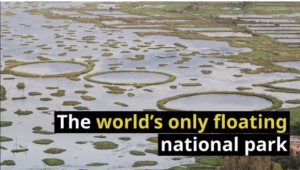
Important Inputs
- Only floating park in the world.
- Located in Manipur
- An integral part of Loktak Lake
- To protect and conserve the deer now called Eld’s deer’s subspecies brow-antlered deer or Sangai in Meitei language
- The park is a swamp with floating mass of vegetation created by accrual of organic garbage and biomass with soil particles that has been thickened into a solid form called phumdis.
2. Mathikettan Shola National Park, Kerala
Mathikettan Shola National Park, Kerala
Important Inputs
- Shola forests are exclusive to the Western Ghats in South India.
- Mathikettan derives from the Tamil word literally meaning ‘mind confuser’ (as the local people say that one forgets the path once he enters into the park).
- It is an elephant strip.
- Located between other reserve forests like Eravikulam National Park and Pampadam Shola National Park.
3. Satpura National Park, Madhya Pradesh
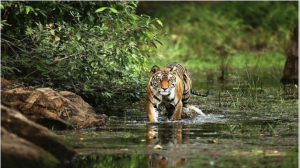
Important Inputs
- Only national park in India, where one can go on a walking safari
- Located in the Narmadapuram District of MP, taking name from the Satpura range, part of a unique central Indian highland ecosystem
- Extremely rich in biodiversity. The animals include leopard, sambar, chital, Indian muntjac, nilgai, four-horned antelope, Chinkara, wild boar, bear, black buck, fox, porcupine, flying squirrel, mouse deer, and Indian giant squirrel.
- There are a variety of birds like Hornbills and peafowl.
- The flora consists of mainly sal, teak, tendu, Phyllanthus emblica, mahua, bel, bamboo, and grasses and medicinal plants.
4. Desert National Park, Rajasthan
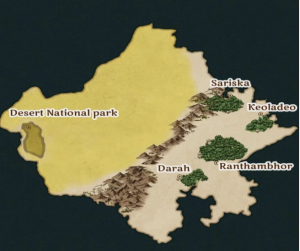
Important Inputs
- One of the largest national parks, with Sand dunes covering more than 40% of the Park.
- The Chinkara or Indian Gazelle (Gazella bennettii) is a common antelope of this region along with desert fox, wolf and desert cat.
- Birdlife includes sandgrouse, partridges, bee-eaters, larks, and shrikes, demoiselle crane, MacQueen’s bustard and the great Indian bustard, a critically endangered species found only in India.
5. Hemis National Park, Ladakh
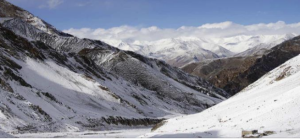
Important Inputs
- It is largest National park in India
- A high-altitude national park in Ladakh with snow leopards
- It has Snow Leopards, Argali (Great Tibetan Sheep), Bharal (Blue Sheep), Shapu (Ladakhi Urial), Asiatic ibex, Tibetan wolf, the Eurasian brown bear (endangered in India), the Red Fox, Himalayan marmot, mountain weasel and the Himalayan mouse hare
- Birds include Golden Eagle, Lammergeier vulture, Himalayan griffon vulture, brown accentor, robin accentor, Tickell’s leaf warbler, streaked rosefinch, black-winged snowfinch, chukar, Blyth’s swift, red-billed chough, Himalayan snowcock, and the fire-fronted serin
6. Khangchendzonga National Park, Sikkim

Khangchendzonga National Park, Sikkim

Important Inputs
- Part of UNESCO World Heritage Sites, becoming the first “Mixed Heritage” site of India.
- Part of UNESCO Man and the Biosphere Programme.
- Mount Kangchenjunga is the third-highest peak in the world at 8,586 metres
- Home of Lepcha tribal settlements.
- It is also home to musk deer, Indian leopard, snow leopard, Himalayan tahr, dhole, sloth bear, viverrids, Himalayan black bear, red panda, Tibetan wild ass, Himalayan blue sheep, mainland serow, goral and takin, rat snake and Russell’s viper.
- Birds include blood pheasant, satyr tragopan, osprey, Himalayan griffon, lammergeier, Western tragopan, green pigeon, Tibetan snowcock, snow pigeon, impeyan pheasant, Asian emerald cuckoo, sunbird and eagle.
- A new species of bird named Himalayan thrush has been found in 2016.
7. Marine National Park, Gulf of Kutch
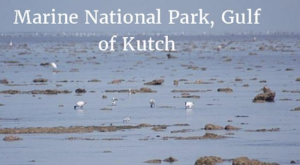
Important Inputs
- It was India’s first Marine Wildlife Sanctuary and first marine national park.
- It has 42 islands on the Jamnagar coast with most surrounded by reefs.
- This fragile ecosystem includes 70 species of sponges, 52 species of Coral.
- As the sea recedes, the sea creatures are exposed to the harsh sunlight before they retreat to deeper waters or take cover.
- The western reef heron (dark morphed) visits the Narara coasts during low tide to pick on the fishes and crustaceans hiding beneath the rocks and reefs.
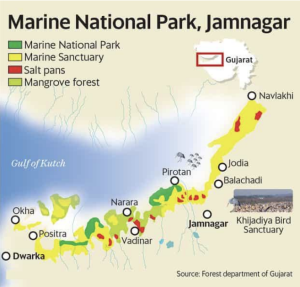
➡️UPSC 2023 General Studies Course: https://sleepyclasses.com/general-studies-for-upsc/
➡️Sociology Optional for UPSC : https://sleepyclasses.com/sociology-for-upsc/
➡️Political Science and IR for UPSC: https://sleepyclasses.com/psir-for-upsc/
➡️Signup here – https://sleepyclasses.com/
Have any query related to UPSC preparation: 📞Contact Us ► Toll-Free: 1800 890 3043 ► Mobile: 6280133177 ► Email: Sleepy.Classes@gmail.com ► WhatsApp: 6280133177



